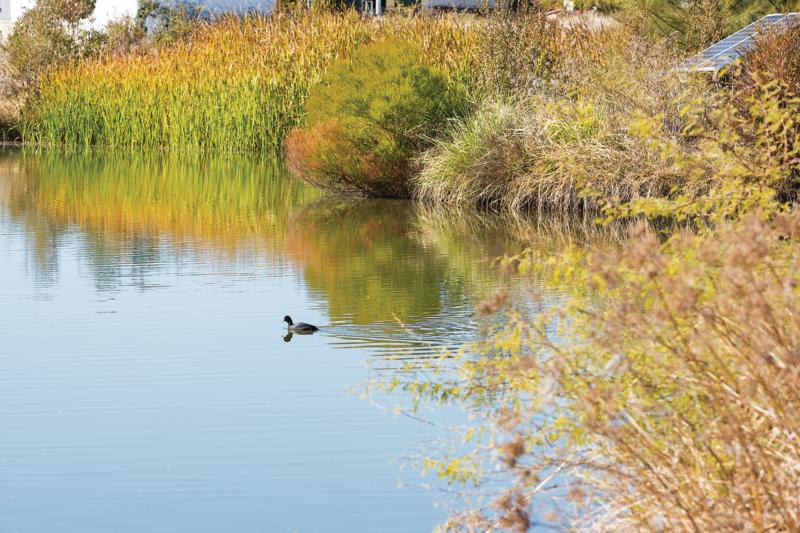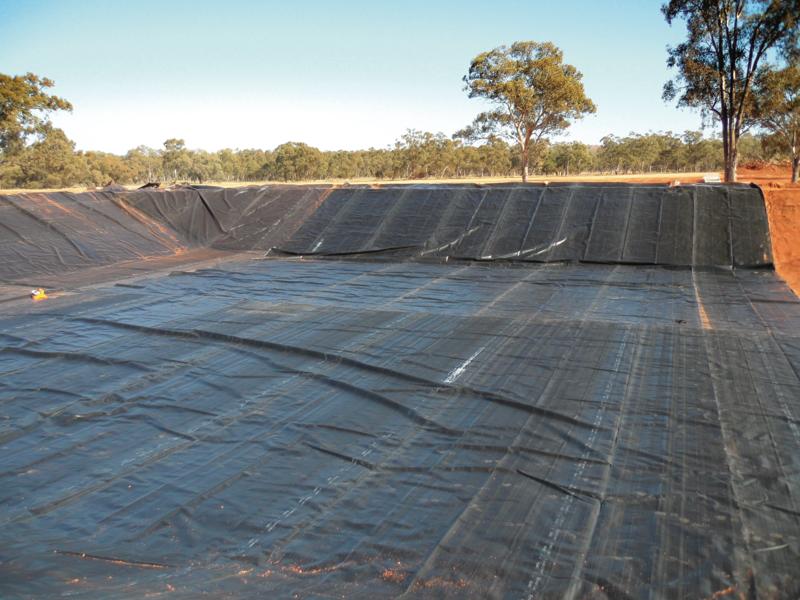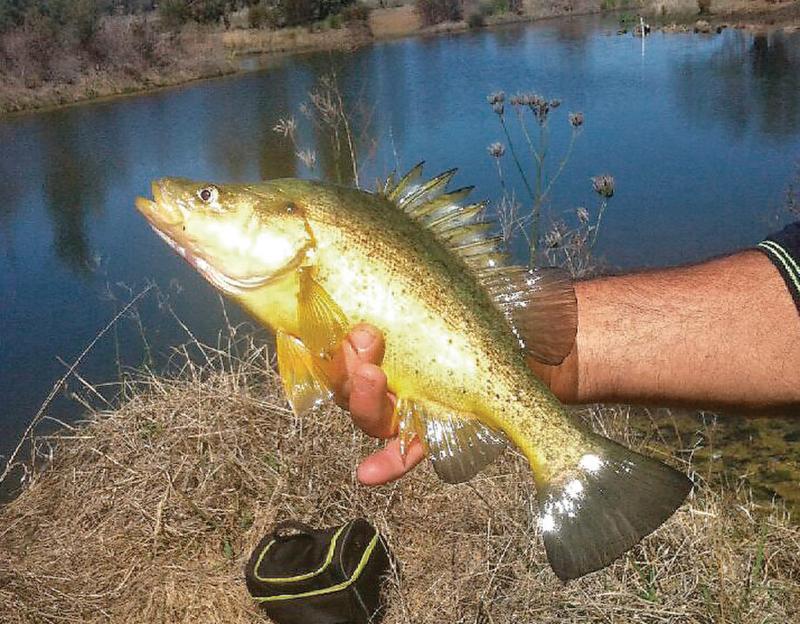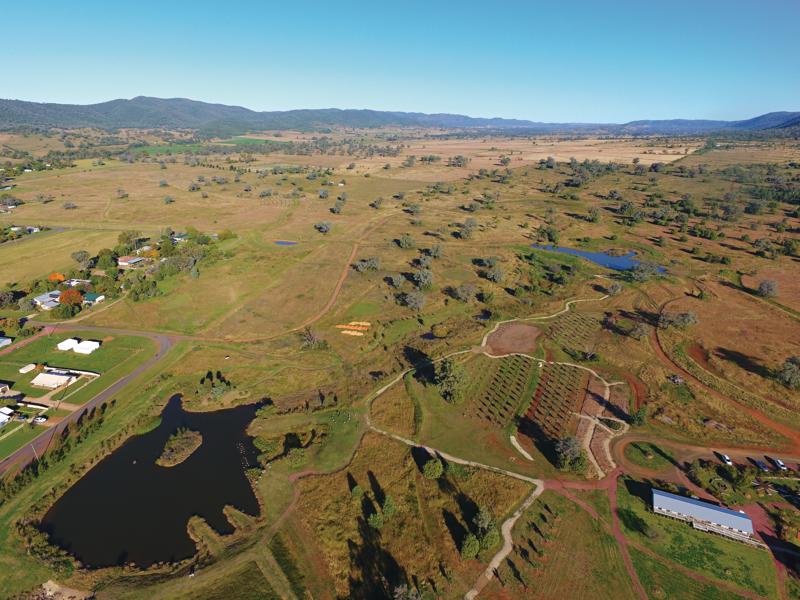IT makes so much sense, it’s surprising it has taken this long to catch on. Savvy scientists have discovered a wide range of advantages when you float solar panels on dams. Shade from the panels means less water is lost to evaporation and, as the panels don’t work at their best when searing hot, the water aids their efficiency by cooling them down. Water quality is also improved due to reduced temperatures and lower exposure to sunlight. And that’s without even mentioning the ‘free’ power that’s generated.
Energy specialist Geoff Fussell says: “Solar panels’ nominal wattage rating is based on them operating at an ambient temperature of 25°C. For every degree rise above that, the panel output reduces. Panels installed over water benefit from the natural cooling effect of the location and even on a very hot day the panel will operate closer to their optimum generation temperature.”
Geoff is chief business manager of solar company Suntrix, which installed floating solar panels on an overflow pond at East Lismore Sewage Treatment Plant in 2017, and says the model could form the basis for any floating solar system.
“The modular technology is very scalable as far as farm dams go, as it fits together like a big Lego set, so you just add more floats and panels together,” Geoff says. “The floating photovoltaic system is designed to use the available surface of an irrigation dam to generate renewable energy to offset electricity consumption.
“The issue with floating solar is the anchoring, but farming areas are not so difficult because the anchoring is to the shore. If the dam does dry out, the panel can just rest on the bottom, providing the bottom is flat. If the dam floods, the panels simply rise and float on the floodwaters.
“There is a gamut of people now doing feasibility studies. It’s a matter of the cost versus the benefits of saving electricity and water so that people can justify the investment at this point.”
Dams are no longer just a humble hole in the ground – they are top of mind for many, especially in the drought, as so many are close to empty.
Related articles on alternative energy
-
Biofuels: Australian farmers’ untapped resource
-
The power of pig poo
-
Why solar stacks up for farmers
-
Solar power: the sky’s the limit NSW Farmers’ Orange branch chair Bruce Reynolds says cleaning dams out while water levels are low due to the drought brings a double-whammy of benefits.
“If you clean out the silt, you deepen the dam, which potentially gives you a more secure water supply in the future and has the chance of opening up a spring to put more water in the bottom,” he says.
In small livestock dams, cleaning them out may increase the capacity by 30-40%, maybe even up to 100% in some cases where dams are very silted up.
“You’ll also increase water quality, because nutrients build up in the silt. Removing the silt removes the nutrients from the dam. Improving water quality will have a direct benefit on animal health and productivity.”
 Cleaning farm dams can both increase capacity and quality and has a direct benefit on animal health. Photo: Simon Scott.
Cleaning farm dams can both increase capacity and quality and has a direct benefit on animal health. Photo: Simon Scott.
Bruce warns farmers to be careful that they don’t go beyond their water allocation when de-silting and deepening a dam. State policy is that 10% of runoff is harvestable in the Central and Eastern divisions, while all rainfall can be captured in the Western division.
“You can’t make it rain over the top of your dam and you can’t hold water indefinitely, but a good dam is still the best way of storing water on farm,” Bruce says, adding that up to a metre of water may be lost per year due to evaporation, so it is worthwhile taking steps to prevent it.
Deeper dams better at preventing water evapouration
NSW Soil Conservation Service Northern area manager Peter Menzies says dam depth is vital, as water evaporates from the surface. “De-silting a dam gives greater water storage but also gives greater depth, which is better for preventing evaporation,” he says. “A broad shallow dam will suffer more from evaporative loss than a smaller deeper dam of similar volume.
“When deepening or de-silting a dam, the structural integrity of the dam must be maintained at all costs. Primary focus should be to de-silt the dam down to just above the original floor and wall. Going beyond this can create problems, particularly if the excavation removes material from the wall, reducing its thickness and affecting its core, or its key.”
Peter says the other critical element for catchment dams – those filled from runoff as opposed to pumped storages – is to always provide and maintain an appropriately sized and stable spillway or bywash. “Without this, flows can run over the dam wall, with the risk of complete wall failure,” he says.
Lining dams important for water retention
Leaking dams can be the bane of a farmer’s life. Denny Vardanega, who grows cherries near Orange, had this issue. He tried lining the leaking dam with clay from a neighbour who was digging a new dam. When that didn’t work, he invested in a plastic lining.
“We went for the thicker plastic, which was more expensive than the thinner stuff,” Denny says. “It’s 1.5mm thick and double-glued at the joins. We put it in 15 years ago and it hasn’t leaked since. At the time it cost us about $5/sqm and it well and truly paid for itself in a couple of years. You can’t grow cherries without water.”
ALSO READ:
Murray-Darling Basin water report confirms little improvement
Water sharing arrangements creates unrest on the Murray-Darling
 “We put in a plastic liner 15 years ago and the dam hasn’t leaked since.” Denny Vardanega, Orange cherry grower. Source: Fabric Solutions Australia.
“We put in a plastic liner 15 years ago and the dam hasn’t leaked since.” Denny Vardanega, Orange cherry grower. Source: Fabric Solutions Australia.
After lining the dam, Denny fenced it to exclude stock. “You can’t have stock near a dam that’s been lined with plastic,” he says. “You also need to make sure the bottom is smooth under the plastic. If there are rocks they can puncture it once the dam fills. The water pressure will push the plastic down over the rocks and cause it to tear. It also needs to be trenched and the plastic buried around the top of the dam, to stop it slipping down as it fills.”
Soil Conservation Service’s Peter Menzies says lining options include plastic, clay, bentonite – a naturally occurring clay that is commercially mined – and polymers that are spread over the surface and sink to the bottom to seal leaks. He says the best option varies depending on the location, use of the dam and cost. “It’s relatively cheap to buy a product and spread it over the top and let it sink, whereas installing a plastic liner is much more expensive,” Peter says. “It depends on the situation.”
Increased biodiversity value-adds to farms
Rick Hutton, CEO of the Registered Training Organisation at Gwydir Shire Council in North West NSW, believes more could be done with farm dams and encourages farmers to think a step further when renovating dams. Rick is a key supporter of
The Living Classroom in Bingara, a reclaimed town common that is now a regenerative farm. On the site is a dam known as the Great Lake, built as part of the Aussie Farm Dam Makeover Project. The dam uses innovative design to minimise evaporation losses and stock pollution.
 A golden perch caught in the dam – proof of the water quality. Source: Fabric Solutions Australia.
A golden perch caught in the dam – proof of the water quality. Source: Fabric Solutions Australia.
“The dam is built along the principles of regenerative agriculture,” Rick says. “It works along the lines that nature provides."
“Most Australian farm dams miss an opportunity to value-add. They’re too shallow for their volume and they lack biodiversity,” says Rick.
The Living Classroom dam incorporates ecological features and edible plants and has attracted a diverse mix of wildlife. “It has a crenulated edge,” Rick says. “The greater the edge, the more habitat and therefore the more biodiversity.”
The land surrounding the dam is vegetated and Rick says it is a myth that trees near dams lower water levels. “Adding a shelter belt to a dam will reduce evaporation,” he says. “Wind causes far more evaporation than will be lost through the trees transpiring. Water quality is much higher when the water runs through vegetation. We have 3km of banked swales [shallow channels] leading into the dam. In a big rain, we don’t lose the rain in a rush out of the system. It stays where it falls and infiltrates the ground.”
 An overview of The Living Classroom in Bingara, which has 14 dams and ponds including the Great Lake (in the foreground). Source: Registered Training Organisation, Gwydir Shire Council.
An overview of The Living Classroom in Bingara, which has 14 dams and ponds including the Great Lake (in the foreground). Source: Registered Training Organisation, Gwydir Shire Council.
“After the dam was built, it took 12 months for the turbidity of the water to drop out, but seven years later it’s still crystal clear,” says Rick. “I’m fairly certain that there is nearly zero infiltration of sediment into the dam.”
Related articles on biodiversity:
-
Native vegetation: taming African lovegrass
-
Putting a price on conservation
Putting a price
on conservation
-
Native vegetation laws - the good, bad and the farmers making it work
-
Industrious beekeepers nurture thriving family business